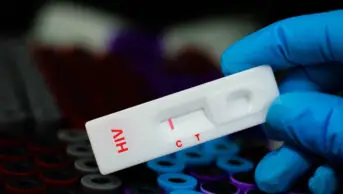
Royal Pharmaceutical Society
Many members of the public have a go-to analgesic for resolving acute pain, and believe they already know enough about acute pain management through information from friends, family and the internet. Many pharmacists are in the same boat — according to a survey of the Royal Pharmaceutical Society membership, conducted by The Pharmaceutical Journal, more than 85% of respondents felt “very confident” or “somewhat confident” in recommending over-the-counter (OTC) analgesics for a variety of indications to patients. But we need to challenge this sense of security and habit; it risks falling into complacency.
The changes we are seeing implemented by NHS England mean that the role of the pharmacy team in supporting patients with OTC analgesia will grow further when the public are directed to pharmacies as the first port of call in managing acute pain.
Opportunity beckons. And community pharmacy is more than capable of delivering.
Role of the pharmacy team
It is always difficult to challenge existing behaviours, but pharmacists and their teams have a duty of care to provide acute pain relief based on the best current evidence.
This starts with the patient. Pharmacists and their teams need to ensure that the course of treatment they recommend is right for that patient. This should be done in a way that is conversational and elicits the right amount of patient history, while understanding the individual’s preferences and reasons for their choice. Whether the patient has a preference or not, the final decision should be a shared one. It should be supported by the pharmacist or their team member being able to justify the appropriateness of the choice for the patient.
Generally, a medicines counter assistant (MCA) would be expected to utilise the WWHAM approach (asking who is the patient, what are the symptoms, how long have the symptoms been present, and what action and medication have been taken), without making it appear to be an inquisition. Subject to any pharmacy protocol, the MCA should be able to provide simple analgesic decision support.
However, it is important for pharmacists and their teams to realise the limits of their competency and to work within the parameters of the pharmacy protocol. They should escalate a case when the protocol determines it, which is generally when any of the history gathered indicates it is beyond their competency or when they feel they need greater expertise in reaching an appropriate decision.
The pharmacist should ensure that any information already gained is shared by the staff member and does not require the patient to repeat themselves, unless there is a need for clarification. Pharmacists and their teams should ensure they are cognisant of all current best evidence.
Overcoming barriers
One of the challenges that all pharmacy staff face is having sufficient time to keep their knowledge up to date; to reassess the developments and changes within the evidence base, as well as their understanding of best practice. Failure to have time to reassess the evidence can lead to providing outdated advice, which may result in patients not using the best treatment and either returning dissatisfied with the treatment or ending up seeing a GP unnecessarily.
It would seem logical to ensure that all staff have access to current publications, whether paper or online, and additional resources such as The Pharmaceutical Journal’s Pharmacy Learning Centre on acute pain.
If there is insufficient time for all staff to read an evidence update, it would be beneficial to have a staff member appointed as the lead for analgesia. They would then take responsibility for sharing any updated information with all team members and providing the information source.
Opportunity knocks
With the advent of the digital minor ailment referral service in parts of England, there are likely to be more referrals from NHS 111 to community pharmacy. Reading between the lines of the ‘NHS Long-Term Plan’, there is a strong likelihood that this will be rolled out nationally and expanded in the way it operates. As part of this, community pharmacists will need to demonstrate their capability in utilising the best available evidence and consistency in approach, regardless of which pharmacy a patient is referred to. This is part of managing clinical risk and ensuring patient experience and expectations are met. If this is not achieved, there is a risk that pharmacists could lose the opportunity it presents for supporting urgent and emergency care, of which acute pain management will be a significant part.
Reassessing how acute pain is managed can be the driver to remove the unacceptable separation between community and clinical pharmacists: the recognition that all pharmacists in all settings are clinicians, and those in the community, as with GPs, are best placed to manage the generalist holistic care of the public.


